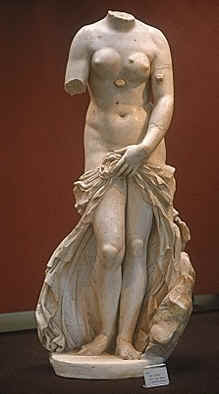Designed by the architect Franco Minissi, the Paolo Orsi Archaeological Museum was inaugurated in January 1988. It is built inside the Area of Villa Landolina and the exhibits are displayed on two floors.
The museum includes artifacts dating from prehistoric eras to those found in Greek and Roman ruins of the city and of other sites of Sicily. The ground floor is divided into 3 sectors (A,B,C), while the central (Area 1) is dedicated to the history of the museum, where are also briefly presented the materials exposed in the three sectors.
Sector A is dedicated to prehistory (Palaeolithic-Iron Age), with an exposure of rocks and fossils that testify to the various forms of animals in the Quaternary Era. It is preceded by a section which shows the geological characteristics of the Mediterranean and Hyblean area.
In sector B, dedicated to the Greek colonies of Sicily during the Ionic and Doric perios, you can identify the location of the colonies in Sicily and their Greek city of origin. In Area C are displayed relics of the sub-colonies of Syracuse The area D, to which all the first floor is dedicated, contains the remains of the Hellenistic-Roman period.
Inside you can admire some of the most famous exhibits of the museum: the Venus Landolina and the Sarcophagus of Adelphia, as well as a selection of coins from a local numismatic museum. Outside of the Archaeological Museum you can visit a park with findings of Roman and Greek period and the tomb of the poet August von Platen
Address: via Teorcito 66Opening Hours
From Tuesdays to Saturdays 9:00 to 18:00
Sundays 09:00 to 13:00
Closed Monday
Ticket € 8,00 (Museum only)
UE citizens* Under 25 € 4,00
UE students**, under 18 e over 60 y.o free entrance
Groups and teachers free entrance
Combined Ticket Archaological Park + Archaological Museum Paolo Orsi
€ 13,50 (reduced € 7)
*only UE citizens and citizens of some other countries such as Australia, New Zealand, Mexico, Brazil, Japan, Canada, Chile, Argentina and few others. Passport needed ** only students from UE and from above listed non EU countries of archaeology literature, philosophy, arts, architecture. Student's card and passport needed.

